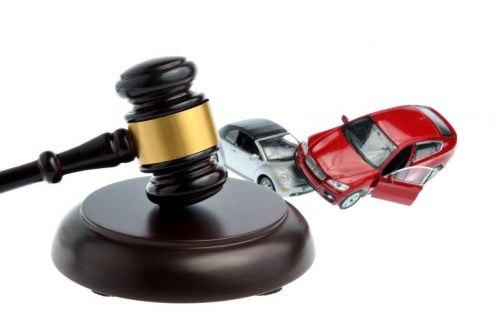Who Is at Fault in a Car Accident?
If you’ve been in a car crash, you may be worried about who the insurance company or the court is going to say was at fault. If they determine you weren’t at fault, you may get a settlement or award. If they determine you were at fault, that settlement may be at your expense. If you were partially at fault, it can affect how much you get.
In some automobile accidents, it is clear who was at fault, but that’s not always the case. Who is determined to be at fault could depend on the laws where you live and the specifics of your car insurance policy.
Contents [hide]
Fault and Lawsuits
You may assume that whoever is at fault in an accident is responsible for the damages, but the truth is, this depends on what state you live in. Some jurisdictions have laws that can lessen your award or even eliminate it altogether, depending on the circumstances.
Comparative Negligence
If you live in a state with comparative negligence laws, how much compensation you can get in a car accident lawsuit will be determined by the percentage of fault each party played in the accident. In states with this law, your award after an accident will be your damages minus the percentage of your fault in the accident.
In states with comparative negligence, if an accident is determined to be more than 51% your fault, you cannot collect non-economic damages. You can collect a reduced amount for economic damages like lost wages and medical bills, but you can’t collect any damages for pain and suffering.
Contributory Negligence
If you played a small role in your car accident’s fault, you’d better hope you don’t live in a jurisdiction with contributory negligence laws. These laws prevent anyone who had any degree of negligence in an accident from collecting damages, even if the bulk of the fault lies with another party. The only jurisdictions that still have contributory negligence laws are:
- Alabama
- Maryland
- North Carolina
- Virginia
- Washington D.C.
If you live in any of these places, if your percentage of fault is deemed to be more than 1%, you are responsible for your own damages.
How Car Damage Can Determine Fault
In some cases, the location and the extent of the damage that is done to the vehicles can be used to determine who was at fault in an accident. This is most common in right-angle crashes, which are also known as “T-bone” accidents. For example, if one car has front-end damage and the other has passenger door damage, the car with damage in the front was at fault.
What to Do After an Accident
There are certain steps you need to take after an accident if you want to be able to prove you weren’t at fault or that you had a lesser degree of fault. These include:
- Calling the police so they can fill out an accident report
- Taking photographs and video footage of the damage to your car and the scene of the crash
- Getting the names and contact information of any witnesses
No matter where you live, the best way to be prepared for an accident is to carry as much insurance coverage as you can possibly afford, including personal injury protection and uninsured or underinsured motorist coverage.
If the other driver doesn’t have enough coverage, the amount of damages you may be able to collect can be limited. It may not be enough to cover your accident-related expenses. It is difficult if not impossible to collect damages from a driver who has no insurance.
Having enough coverage for your own damages can help you avoid court altogether. When you’re injured and you’re focused on your recovery, this can take a lot of stress and pressure off of you.
Who Is at Fault in a Car Accident?
If you’ve been in a car crash, you may be worried about who the insurance company or the court is going to say was at fault. If they determine you weren’t at fault, you may get a settlement or award. If they determine you were at fault, that settlement may be at your expense. If you were partially at fault, it can affect how much you get.
In some automobile accidents, it is clear who was at fault, but that’s not always the case. Who is determined to be at fault could depend on the laws where you live and the specifics of your car insurance policy.
Fault and Lawsuits
You may assume that whoever is at fault in an accident is responsible for the damages, but the truth is, this depends on what state you live in. Some jurisdictions have laws that can lessen your award or even eliminate it altogether, depending on the circumstances.
Comparative Negligence
If you live in a state with comparative negligence laws, how much compensation you can get in a car accident lawsuit will be determined by the percentage of fault each party played in the accident. In states with this law, your award after an accident will be your damages minus the percentage of your fault in the accident.
In states with comparative negligence, if an accident is determined to be more than 51% your fault, you cannot collect non-economic damages. You can collect a reduced amount for economic damages like lost wages and medical bills, but you can’t collect any damages for pain and suffering.
Contributory Negligence
If you played a small role in your car accident’s fault, you’d better hope you don’t live in a jurisdiction with contributory negligence laws. These laws prevent anyone who had any degree of negligence in an accident from collecting damages, even if the bulk of the fault lies with another party. The only jurisdictions that still have contributory negligence laws are:
- Alabama
- Maryland
- North Carolina
- Virginia
- Washington D.C.
If you live in any of these places, if your percentage of fault is deemed to be more than 1%, you are responsible for your own damages.
How Car Damage Can Determine Fault
In some cases, the location and the extent of the damage that is done to the vehicles can be used to determine who was at fault in an accident. This is most common in right-angle crashes, which are also known as “T-bone” accidents. For example, if one car has front-end damage and the other has passenger door damage, the car with damage in the front was at fault.
What to Do After an Accident
There are certain steps you need to take after an accident if you want to be able to prove you weren’t at fault or that you had a lesser degree of fault. These include:
- Calling the police so they can fill out an accident report
- Taking photographs and video footage of the damage to your car and the scene of the crash
- Getting the names and contact information of any witnesses
No matter where you live, the best way to be prepared for an accident is to carry as much insurance coverage as you can possibly afford, including personal injury protection and uninsured or underinsured motorist coverage.
If the other driver doesn’t have enough coverage, the amount of damages you may be able to collect can be limited. It may not be enough to cover your accident-related expenses. It is difficult if not impossible to collect damages from a driver who has no insurance.
Having enough coverage for your own damages can help you avoid court altogether. When you’re injured and you’re focused on your recovery, this can take a lot of stress and pressure off of you.



